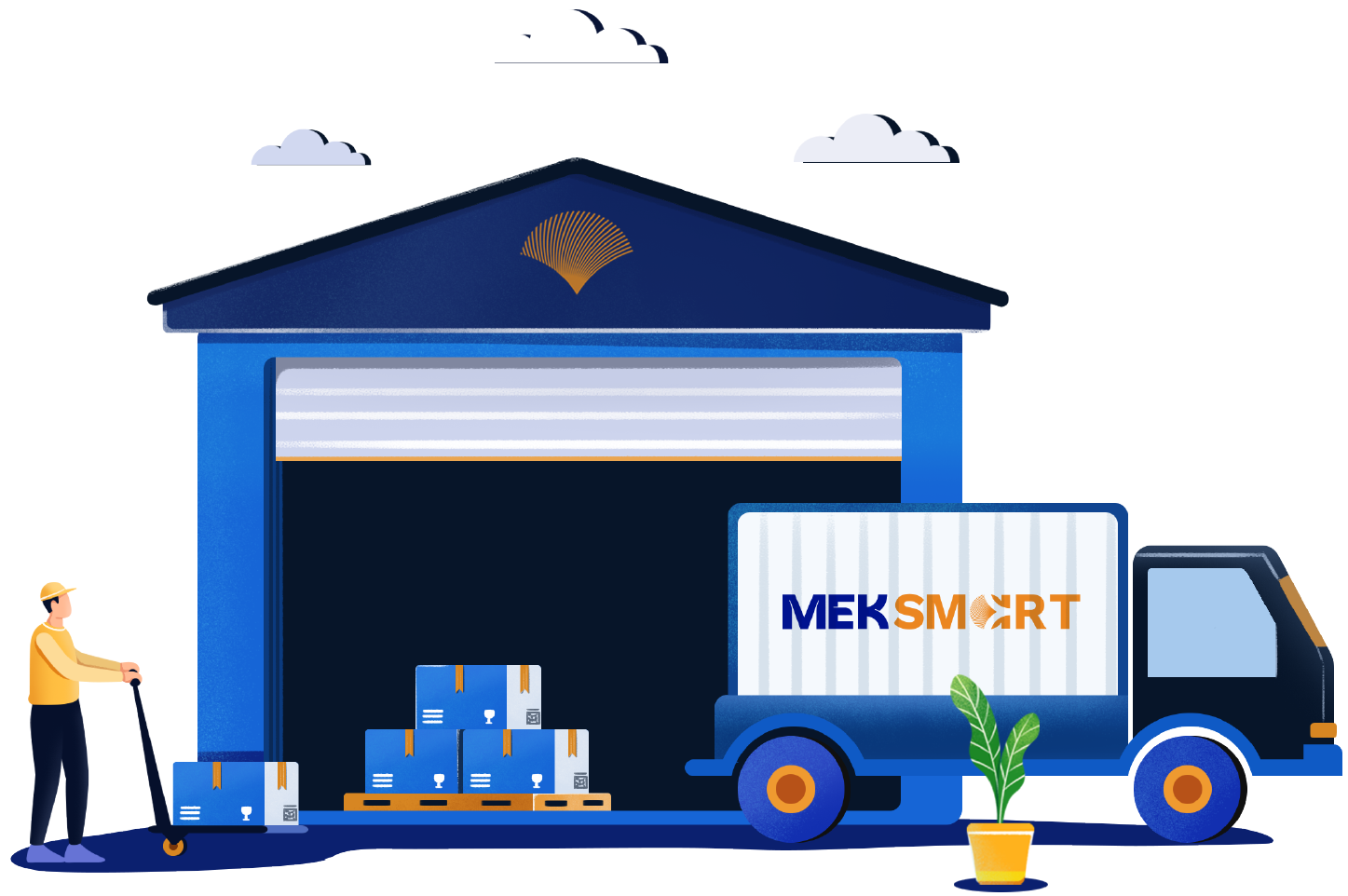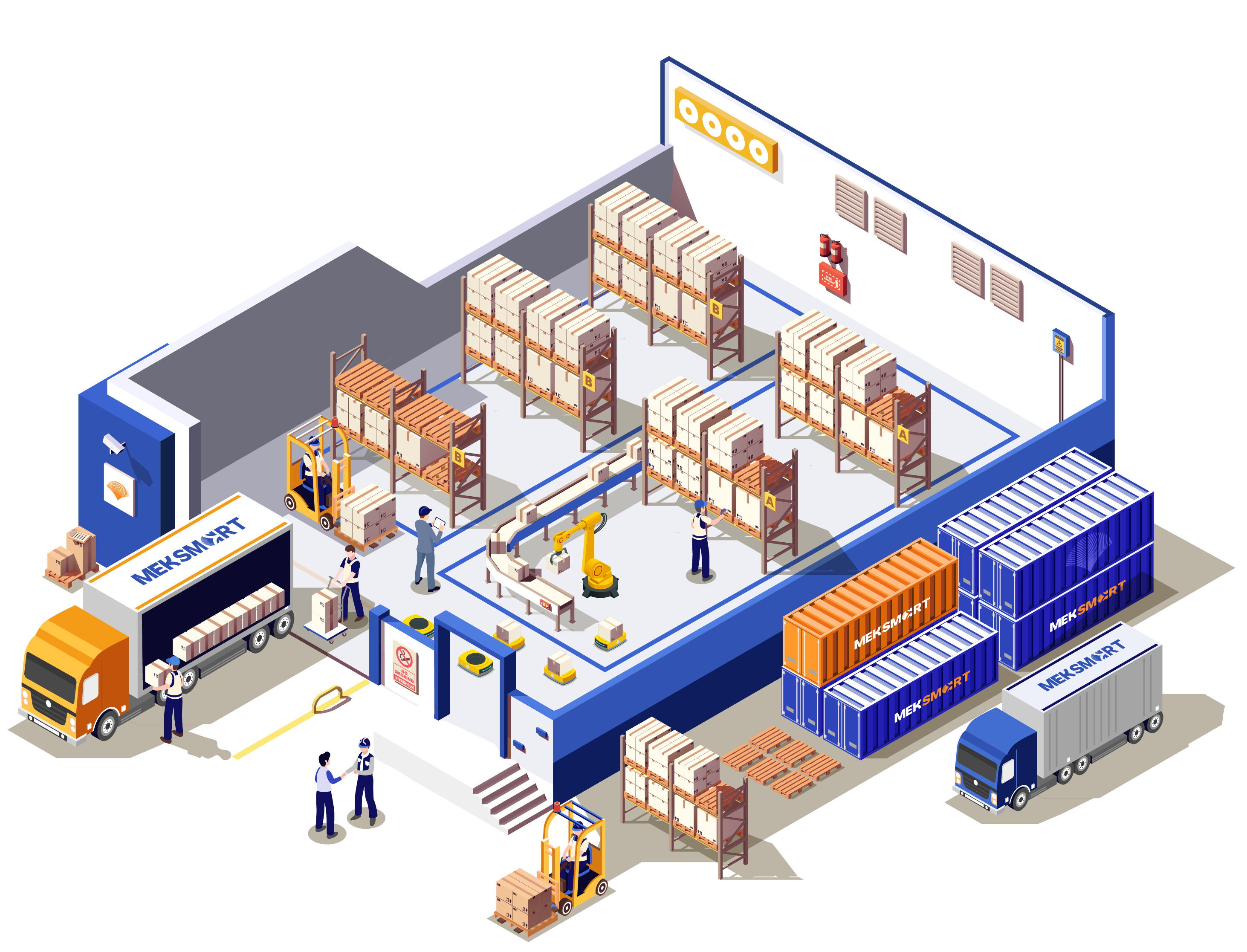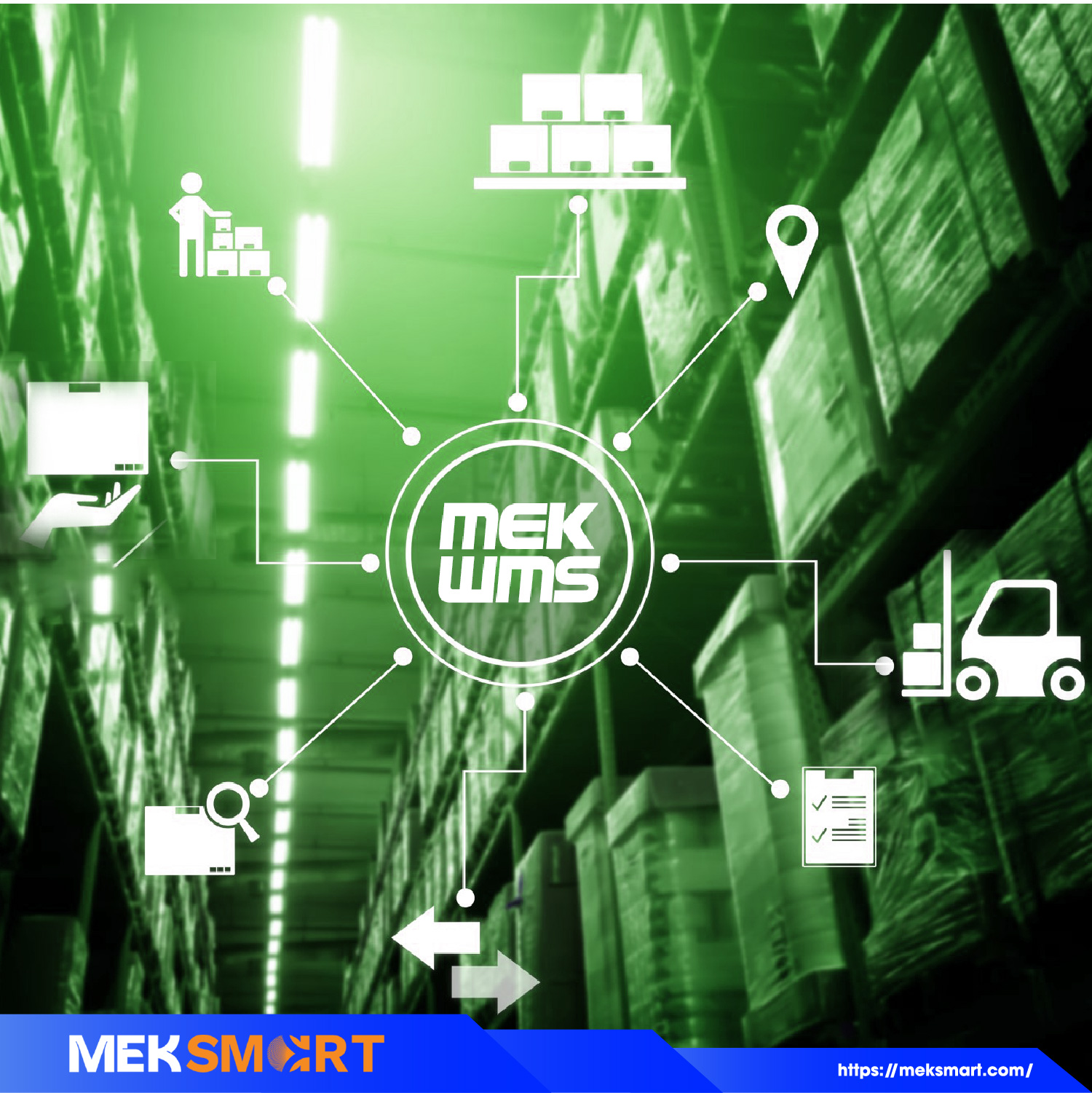MEKSMART
GENERAL NEWS
Author:
Update: 15/12/2022
RECEIVE – RECEIVE INPUT
Receiving
A seemingly simple step, but an opportunity to make or break efficiency later in the merchandise distribution process.
Computer science experts have coined the phrase “garbage in, garbage out” to describe how a bad input can spread through computation and destroy the entire output. The same is true at the receiving dock, where a mistake will create more headaches later on. This is the first and best point to get the right inventory count. Accurate and efficient part counting prevents production stoppages on assembly lines and ensures distribution centers can ship complete and timely orders.
Before Advanced Shipping Notice (ASN) technologies appeared and were widely applied, the receiving process began with a truck arriving at the yard and often unexpectedly. Without many details about the product, carrier, packaging type, or arrival time, the receiving process can look like a frenzied argument for answers. No one likes to think of their product as waste, but this type of input doesn't bode well for inventory management in the rest of the building.
Whether by ASN or another method, the more likely you are to see what's coming, the more granular your ability to manage. This will ensure that distributors get what they need at the right time while minimizing out-of-stock positions and increasing the speed that critical products reach stores or customers correctly. It is important that information flows from the actors in the supply chain before it is received. When suppliers provide information to carriers and carriers provide information to recipients, the adoption process becomes more efficient, even in a currently equipped $30 million facility. great with a few employees.
Next, we take a look at the individual steps in the receiving process, starting with how the shipments arrive
1. Prepare for productivity
ASNs are a powerful way to increase efficiency through preparation, but partnering with providers can improve reception even without an ASN. For example, large retailers are increasingly gaining control over their freight. Instead of paying upfront and burying shipping costs in their product, they can choose to have it collected later with the carrier of their choice. With economies of scale, distributors can take advantage of cost and freight leverage with those carriers, and this fact also creates opportunities for consolidation.
For example, if there are 20 LTL loads arriving from Los Angeles to DC in Arizona, they can be shipped to a collection point of one of the carriers, then assembled into a mixed FTL truck and delivered Go. This will improve visibility, because you'll know what to expect at that location - even without an ASN - to manage consolidation.
In this case, because the shipment is based on a purchase order (PO), if you know it's shipped then you know everything about the particular shipment. If there is an internal possibility, you can match the PO information with the shipping information and ask the supplier to include the PO in the bill of lading. This is one of the many ways that the best retailers are managing cross-over information to the tiniest details of what is about to be delivered to a facility.
It's an exception, not the rule. Oftentimes, recipients may have a list of “hot” products or suppliers, so as soon as they see one, they take a different action instead of saving. The first choice is always the lowest cost savings. But if, for example, an item is out of stock, its receipt can be handled accordingly. With detailed information from internal systems, supplier systems, and transportation partner systems, recipients can be proactive in ordering a “hot” item to be delivered to the facility as soon as possible. good.
That is to say, the opportunity to save still exists by considering the constraints of time, price, and service level. Retailers are prioritizing appointments and shipping methods based on that information. If you have a product in 12 weeks, there's no reason to rush a shipment. If you don't have stock of a "top" product, then it's time to ship, and even better, skip the collection step.
2. The first stage of the process – the vehicle arrives at the gate/park
ASN protocols offer the best in preparation, allowing recipients to have the right people and equipment in the right place and at the right time. Some ASNs include only item information, and others are more detailed, but even the most basic information can allow managers to allocate resources more intelligently. It can be extremely valuable when you know that one truck will need three people for hours, while another will only need one person for 20 minutes.
This type of prioritization is essential in effectively managing two key aspects of receipts. One is the mode of transport, is it LTL, FTL, or parcel? The second aspect is to classify incoming shipments as loose parcels or palletized units. It is important to distinguish these two aspects because certain loads do not require a driver to be present.
When trucks arrive at the gate, whether they are delivered directly to the dock or to the yard, a record of the quantity and location of the product received is entered into the management system. inventory management. However, some loads require a more timely response from the receiver so the driver doesn't have to wait. Especially LTL and lose parcels require quick and accurate delivery.
Ideally, this process starts at the yard. Transportation management systems (TMS) and yard management systems (YMS) act as locators for the warehouse.
When containers are dropped, a yard operator is then directed to bring them to the door, just as a forklift operator is navigated to tow a pallet. Some fleets of trailers use RFID in the yard and in the vehicle to instantly locate what's inside at any given time.
At a basic level, some kind of yard management system is essential, even if it's an internal management system. This will help the yard navigator as a locator.
Parking spaces are numbered and located so one knows where trailers and containers from which company are located. This device can then manage yard labor more efficiently, and when external partners come to pick up or deliver goods, the system can direct them quickly instead of searching for information every time. driver arrives.
3. Profile Setup
The reception function – whether manual or automated – is centered around very little information. Regardless of the unit, whether it's bales or pallets, the receiver enters into the warehouse management system (WMS) that they have just received item X with quantity Y. The total file knows how many packages are on the pallets. , how many units are in a bale, height, etc. At the time of receipt, the WMS only needs to know how much product A has been received, and in what form.
Expanded ASN information on incoming shipments, carton level labeling allowing for automated receiving processes. Automated receiving systems use a combination of barcode scanning and typically automatically print and apply internal labels. Automated conveyors receive, scan, apply barcodes and use them to move further along the line.
After orienting incoming goods for scanning, the conveyor system can automatically save records – at least for suppliers that match product-grade labeling.
Vendors may go through a testing phase with occasional audits. Since less labor is required than detailed manual receiving, an audit might target 7 SKUs on a line to verify that, for example, item A was built on one bale with 4 compartments and 12 items of each compartment.
Large retailers often require compliance with these labeling processes, which streamline the receipt and flow of materials through a wider network. With automated conveyor belts, a facility can bypass storage by navigating an input carton to a shipping sorting area, or straight from the door to door.
Recipients can also request special labels that go beyond UCC compliance, such as store addresses so that when the item is cross-docked, it has been allocated to a store. Specifically. Automated reception and the software required for the cross-dock are not inexpensive, but even a home company can reduce manual labor by using ASNs to improve reception.
Receiving is a small but important step in the supply chain, but if done well it can be a successful step in the entire distribution center. Efficiently handled, quickly processed, and well thought out, incoming products are now sorted to begin their journey into the warehouse. In the next section, we'll look at how items that have been received go from the door to the location and storage.
Source: Supply Chain Management Review













